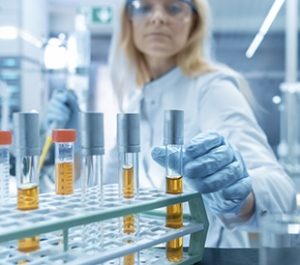
A critical piece in drug discovery and development is conducting DMPK (Drug Metabolism and Pharmacokinetics) studies, often referred to as ADMET (Absorption, Distribution, Metabolism, Elimination, Toxicity) studies. These studies help to determine the viability of a drug candidate by answering these key questions:
- Absorption – How much of the drug is absorbed and how quickly? (bioavailability)
- Distribution- Where is the drug distributed within the body? What is the rate and extent of the distribution?
- Metabolism- How fast is the drug metabolized? What is the mechanism of action? What metabolite is formed and is it active or toxic?
- Elimination- How is the drug excreted and how quickly?
- Toxicity-Does this drug have a toxic effect to body systems or organs?
It is estimated that close to 50% of drug candidates fail because of unacceptable efficacy1 and that up to 40% of drug candidates have failed in the past due to toxicity2. Drugs such as mibefradil, soruvidine, and phenylpropanolamine hydrochloride have been pulled off the market due to drug-drug interactions or toxicity3. It has become obvious to both regulators and drug makers that in addition to pharmacological properties, ADME/Tox studies play a crucial role in the success of a drug candidate. Due to this impact on eventual success, these studies now occur early in the drug discovery process.
In vitro and in vivo studies are conducted to enable a drug developer to make a go-no-go decision regarding if a drug should be selected as a drug candidate, and moved into late-stage preclinical and clinical programs. ADME properties allow drug developers to understand the safety and efficacy of a drug candidate, and are necessary for regulatory approval.
The Food and Drug Administration (FDA) has produced several guidance documents for industry such as Safety Testing of Drug Metabolites, In Vitro Metabolism and Transporter-Mediated Drug-Drug Interactions Studies, Clinical Drug Interaction Studies — Study Design, Data Analysis, Clinical Implications, and Title 21 part 58 Good Laboratory Practices for Nonclinical Laboratory Studies to provide instruction and to ensure that best practices are employed when evaluating the safety and efficacy of a drug candidate. The underlying goal and end-game for all ADME/Tox studies is to better understand a compound’s metabolite-mediated toxicity and safety profile to make a concrete decision on whether the compound can progress to late stage preclinical and clinical studies to enable filing for an Investigational New Drug (IND), New Drug Application (NDA), or a Biologics Licensing Application (BLA).
While each drug is unique, specific models and associated assays as defined by FDA guidance documents help scientists to determine what ADME properties should be evaluated. For example, liver microsomes and whole hepatocyte models are commonly used in ADME in vitro studies, both models contain metabolism enzymes such as CYP450 and UDP-glucuronosyltransferase (UGT). These in vitro models can be applied to assays such as CYP inhibition and induction4. To evaluate intestinal permeability in vitro assays such as CACO-2 or MDCK cell-based studies are utilized. During discovery, as well as in late stage preclinical and non-clinical studies, in vivo studies are conducted to evaluate pharmacokinetic (PK) properties. In vivo PK studies are conducted with Association of Assessment and Accreditation of Laboratory Animal Care (AAALAC) accredited animals such as mice and rats, whereas non- human primates are employed to generate PK data to evaluate properties such as drug clearance, bioavailability, exposure, half-life, and distribution volume4. These studies include a mix of non-GLP and GLP toxicology studies.
To help streamline data handling and data processing in research laboratories, ADME/Tox capabilities have been developed for use with Thermo Fisher™ Platform for Science™ software. These capabilities provide a mechanism for laboratories to manage assay protocols, track reagents and materials, capture assay data, and calculate results. Learn more about how Thermo Fisher’s Digital Solutions can drive efficiencies in your laboratory here.
References:
- Kennedy, Tony. “Managing the Drug Discovery/Development Interface.” Drug Discovery Today, vol. 2, no. 10, 1997, pp. 436–444., doi:10.1016/s1359-6446(97)01099-4.
- DiMasi, J A. “Success Rates Fir New Drugs Entering Clinical Testing in the United States.”Clinical Pharmacology & Therapeutics, 58, no. 1, July 1995, doi:10.1016/0009-9236(95)90066-7 .
- Li, Albert P. “Screening for Human ADME/Tox Drug Properties in Drug Discovery.” Drug Discovery Today, 6, no. 7, 2001, pp. 357–366., doi:10.1016/s1359-6446(01)01712-3.
- Wan, Hong. “What ADME Tests Should Be Conducted for Preclinical Studies?” Admet & Dmpk, 1, no. 3, 2013, doi:10.5599/admet.1.3.9.
















